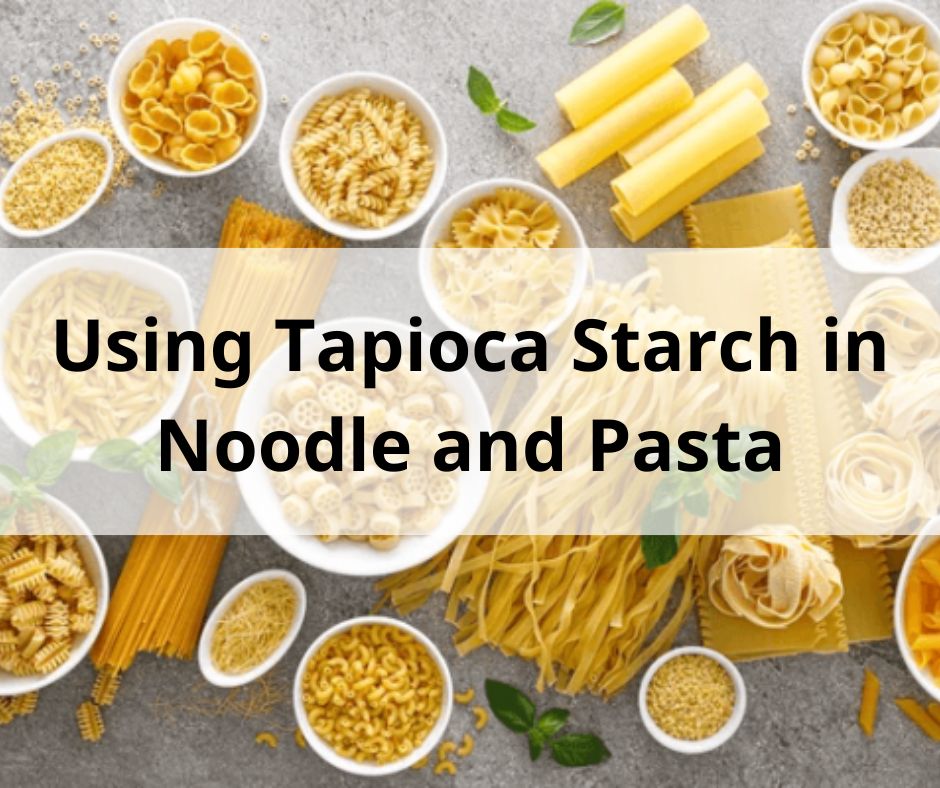Noodles and pasta are both types of foods made from dough that is typically composed of flour, water, and sometimes eggs. The dough is rolled out and cut into various shapes and sizes, which are then cooked in boiling water or broth. Noodles are typically associated with Asian cuisine, while pasta is a staple in Italian cuisine. Both noodles and pasta come in a variety of shapes and sizes and can be served with a variety of sauces, meats, and vegetables.
𝐓𝐚𝐩𝐢𝐨𝐜𝐚 𝐬𝐭𝐚𝐫𝐜𝐡 𝐢𝐧 𝐧𝐨𝐨𝐝𝐥𝐞 𝐚𝐧𝐝 𝐩𝐚𝐬𝐭𝐚 𝐩𝐫𝐨𝐝𝐮𝐜𝐭𝐢𝐨𝐧
Tapioca starch can be important in noodle and pasta production, particularly in gluten-free varieties. Tapioca starch can help provide the desired texture and structure of the noodle or pasta and can also improve the overall quality of the final product. In gluten-free versions, tapioca starch can be used as a substitute for wheat flour, as it can help bind the ingredients together and provide a similar texture to traditional wheat-based products. Tapioca starch can also help improve the chewiness and elasticity of gluten-free noodles and pasta, which can be challenging to achieve without the presence of gluten.
If you are interested in tapioca starch, please contact me for the best price.
———————————————————————-


